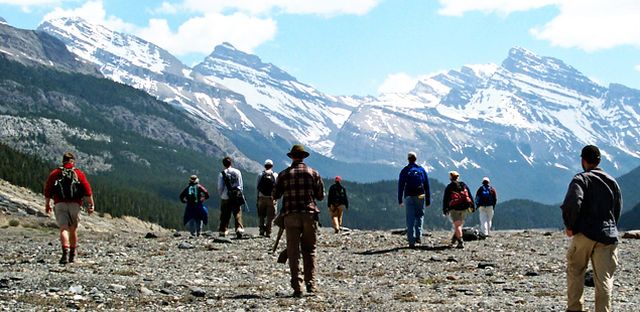
Geology Faculty Publications
Integration of Classification Tree Analyses and Spatial Metrics to Assess Changes in Supraglacial Lakes in the Karakoram, Himalaya
Document Type
Article
Publication Date
2013
Publication Source
International Journal of Remote Sensing
Abstract
Alpine glacier responses to climate change reveal increases in significant retreat with corresponding increases in the production of glacier meltwater and development of supraglacial lakes. The rate of occurrence and spatial extent of lakes in the Himalaya are difficult to determine because current spectral-based image analyses of glacier surfaces are limited through anisotropic reflectance and lack of high-quality digital elevation models (DEMs). Additionally, the limitations of multivariate classification algorithms to classify glacier features in satellite imagery have led to an increased interest in non-parametric methods, such as classification and regression trees. This article demonstrates the utility of a semi-automated approach that integrates classification tree-based image segmentation and spatial metrics in an object-oriented analysis to differentiate supraglacial lakes from glacier debris, ice, ice-cliffs, and lateral and medial moraines. We used 2000 and 2004 Advanced Spaceborne Thermal Emission and Reflection Radiometer (ASTER) visible and near-infrared (VNIR) and shortwave infrared (SWIR) imagery to characterize and assess supraglacial conditions on the Baltoro Glacier in the Karakoram Himalaya. Input variables for the image segmentation include ASTER VNIR and SWIR spectral bands, indices (e.g. normalized difference water index (NDWI), normalized difference vegetation index (NDVI), and normalized difference snow index (NDSI)), image band ratios (e.g. NIR/red, middle infrared (MIR)/green, and MIR/red), and DEM derivatives. Classification tree analysis was used to generate initial image segments and it was particularly effective in differentiating water from ice and other glacier surface features. The object-oriented analysis included the use of Boolean logic and squared pixel (SqP) spatial metric to refine the classification tree output. The results of classification tree-based image segmentation show that NDWI is the most important single variable for characterizing glacier surface features followed by NDVI, NIR/red ratio, and green and red spectral bands. Lake features extracted from both images show that there were 131 lakes in 2000 as compared to 157 lakes in 2004. In general, there was a significant increase in the planimetric area of these lakes from 2000 to 2004, and we documented the formation of 26 new lakes. It appears that lake-size increments occur mostly in the lower part of the ablation zone, whereas most of the new lakes are formed in the upper part of the ablation zone. The classification tree outputs are intuitive and the data-derived thresholds eliminate commonly subjective visual determination of such threshold values used in image segmentation. The results of this study show that glacier lakes in high-mountain environments can be characterized without topographic information, which is difficult to obtain from a DEM. Also, the semi-automated method described in this article can potentially eliminate the often laborious visual multitemporal analysis of glacier lake surface change, thereby producing consistent and replicable results needed to assess the trends of alpine glacier response to climate change in the Himalaya.
Inclusive pages
387-411
ISBN/ISSN
0143-1161
Copyright
Copyright © 2013 from International Journal of Remote Sensing
Publisher
Taylor & Francis
Volume
34
Issue
2
Peer Reviewed
yes
eCommons Citation
Bulley, Henry N.N.; Bishop, Michael P.; Shroder, John F.; and Haritashya, Umesh K., "Integration of Classification Tree Analyses and Spatial Metrics to Assess Changes in Supraglacial Lakes in the Karakoram, Himalaya" (2013). Geology Faculty Publications. 8.
https://ecommons.udayton.edu/geo_fac_pub/8
COinS



Comments
Permission documentation is on file.